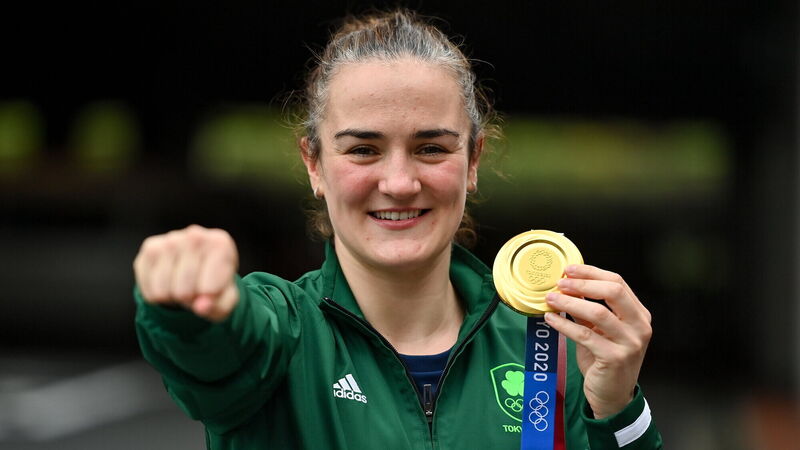Parental influence is greatest in the early years of childhood when the child idolises their parents as their heroes. It is not unusual to witness a five-year-old state openly that they want to be like their mother or father when they grow up.
However, as children grow older and begin to form their own identity, their parents become less perfect. Consequently, children may go through a phase at about eight where they imagine that their parents are not their real parents and their real parents are like fairytale heroes, and they will come and rescue them from these bumbling fools any day now.
This harks back to the role of the fairy tale in childhood. If we consider the fairy tale formula, all successful fairy tales have one thing in common: the loss of parents. Characters like Cinderella, Snow White, Hansel and Gretel and, more recently, Harry Potter have no active parents in their lives. This is not an accident. These stories reinforce the message that if the most unimaginable thing happens and you lose a parent, you too will survive and be okay.
But the fairy-tale model only works up to a certain age and then other, more developmentally appropriate icons need to come into play. Traditionally these might be superheroes, princesses or characters with special powers. This too is an important aide to development as it allows the child to exist in the imaginary and be reassured of the illusion of magic and supernatural powers that can assist them to overcome life’s adversities, if only in the imaginary world.
Flawed idols
But as children approach their teenage years, the fantasy of the superhero or the princess begins to also lose its reassuring qualities. The realisation that life is not so clear-cut and that the world is not broken into ‘good’ and ‘bad’. Instead, the world is quite complex, and even our heroes are flawed. Many are not perfect and this realisation can be quite unsettling to many tweens. Who should they follow now? Who will offer me the reassurance and solace that my idolised parents, fairy-tale characters and superheroes did?
Cue the entry of the role model or the ‘real life’ icon. Here we would traditionally see teenagers gravitate toward music heroes. The pop icon who seems to portray everything that we would like for ourselves: riches, beauty, popularity and talent. As adolescence is a key period in our identity development, the influence of role models in this period is crucial. Teenagers will try on identities like clothes and will swap in and out with great regularity. I can remember going through my rocker phase where I had Metallica patches on my denim jacket, to my grunge stage, to later veering into the raver stage. These stages and phases of development are important as they give us guides and props to navigate sexuality, power, conscientiousness and direction. For example, the poster of the boyband on the wall was a great way for young teenage girls to navigate their sexuality. I can remember the girls growing up in the ’80s and ‘90s who would talk about how Morton Harket from A-Ha or Joey from NKOTB were the only ones they loved, not anyone in our village. In hindsight, this was a safe way of expressing sexuality without having to enact it in the real world, which is a wonderful use of cultural props to navigate these intimate life stages.
New heroes

So who are the role models for our children now? For boys, there are the Premier League footballers, many of whom earn exorbitant sums of money and lead a quite lavish lifestyle, but there are the likes of Marcus Rashford and Ronaldo who also appear to have a strong social conscience and good moral compass. The music scene seems to have lost its grip as an identity marker, and perhaps this is due to the likes of YouTube and Netflix taking over some of the attention economy, which music has struggled to keep up with. Or perhaps, as my friend Sean Moncrieff suggested, maybe there is nothing to rebel against anymore?
But where we have always struggled is in the identification of role models for girls. The era of YouTubers, influencers and reality TV has meant that there is a pretty narrow normative when it comes to icons for girls. So who are their role models now? Although we have fabulous female sportspeople in hockey, rugby, soccer and the LGFA, many, unfortunately, are not yet household names. The one name that always gets mentioned is Katie Taylor. She is conscientious, hard-working, well-grounded and a seemingly very decent human being.
This weekend a new heroine was brought to our attention in the form of Kellie Harrington. I know little or nothing about boxing, and unlike many people over the last week, I am not going to pretend that I do. Only for Hugh Cahill’s commentary, I wouldn’t have had a clue who was winning between Kellie and her opponents. But what I have noticed is the remarkable humanity of our female boxers. That is not to outdo nor underemphasise the other great Irish Olympians like Paul O’Donovan, Nadine Coyne and all of the others, but there was something hugely impressive about Harrington.
Grace and empathy
In a sport that has an impression of being aggressive and ruthless, she showed outstanding empathy to her defeated opponents. Both she and Katie Taylor show a graciousness in victory that stands out. Her determinedness to thank her backroom staff and her all-round impressive level of humanity and grace was outstanding.
Maybe Harrington and Taylor are just espousing the culture of boxing, I don’t know. Maybe they are the way they are because of their working-class backgrounds. Maybe they are a product of good parenting, solid community support and unwavering belief that they received from those around them. Whatever it is, I think if we could bottle it and share it around, that would be fantastic. They truly are worthy champions when it comes to human beings, regardless of their achievements in the ring.
Will we see a raft of teenage girls heading to the boxing gyms to emulate the achievements of these spectacular sportswomen? Maybe. I fear when the dust settles and the hype dies down, that the allure of the reality TV, influencer and YouTube world may well return to dominance. But for now, let’s take a moment and be grateful to Kellie Harrington for adding to the number of genuine female icons that we can now talk about in our role model conversations.

Unlimited access. Half the price.
Try unlimited access from only €1.50 a week
Already a subscriber? Sign in
CONNECT WITH US TODAY
Be the first to know the latest news and updates










